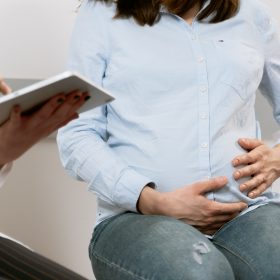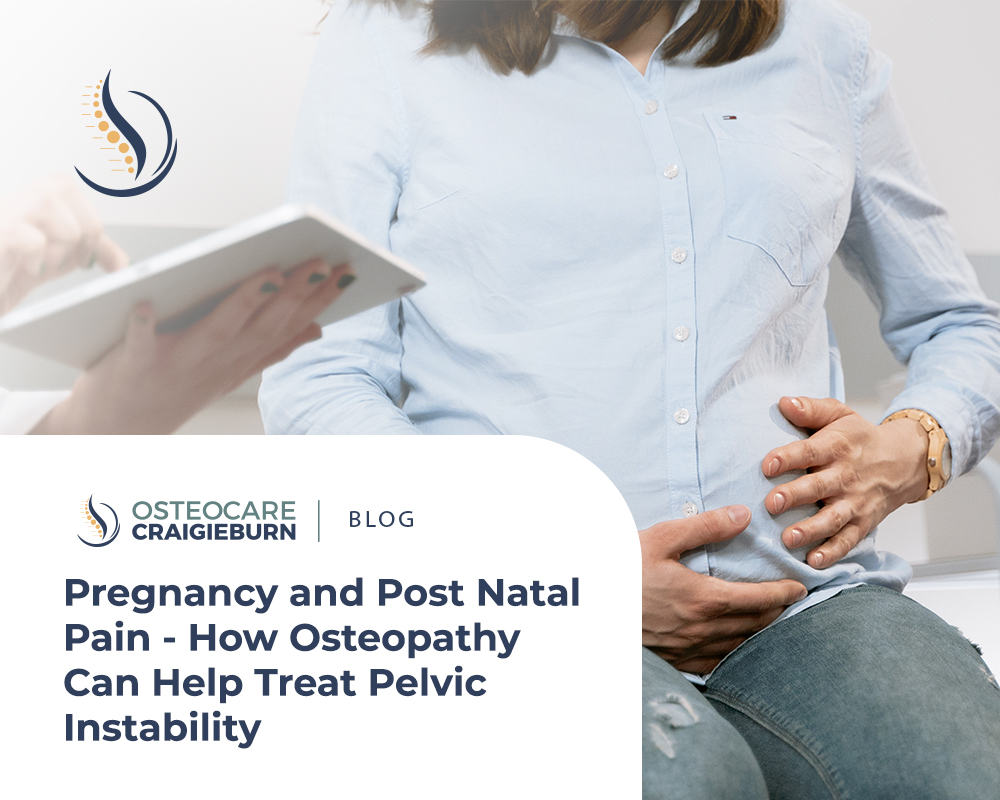One of the challenges of expecting mothers is pelvic instability, and the risk of developing it is about 4-84%. It’s characterised by pain felt at the back of the pelvis and the frontal areas of the pubic bones. Depending on the severity, symptoms can vary from mild discomfort to a sharp stabbing pain to the thighs and hips. It’s a common condition during and after pregnancy, which is why people often considered it trivial. However, it can lead to chronic pain and obstruction in daily activities, like walking and standing.
What causes it?

During pregnancy, the woman’s body changes to accommodate the growing baby in the womb. One of the substantial changes in the reproductive system is the production of relaxin — a protein hormone that helps relax the ligaments in the pelvic area and widens and softens the cervix. It enables more mobility around the pelvis as a preparation for giving birth.
But there’s a downside to this change. The ligaments that hold together the joints and the pelvis area become loose and unstable, which leads to pelvic instability. Most times, the cause is multifactorial and may include pregnancy hormones, rapid postural changes, increasing baby weight, and biomechanical and genetic factors. All of these can intensify the strain on the pelvic joints.
What are the symptoms?
Symptoms are often overlooked and dismissed as a normal part of pregnancy — this is a mistake many health practitioners make. An incorrect diagnosis can be costly as it can progress to a chronic pain condition if not treated early. These common symptoms will help you identify if you have it.
- Crunching, clicking, or grinding pain on your pelvis when rolling over the bed, standing up, or walking
- Pain in the sacroiliac joints while climbing the stairs or lifting light materials
- Pain in the pubic bones, inner thigh, and groin
- Pain that persists for several months during and after pregnancy
If you have pelvic instability, you must avoid these activities:
- Prolonged or fast walking
- Deep squatting
- Going down and up the stairs
- Standing on one foot
Multiparity, emotional stress, high body mass index, and demanding work can also increase the risk of pelvic instability.
Tips to reduce the pain
- Sufficient rest
- Use an ice pack on painful areas for 20-30 minutes.
- Wear a compression garment or pelvic belt.
- Lie down to rest instead of sitting in a chair.
- Maintain enough support on the back when sitting.
Osteopathy Treatment for Pelvic Instability

A trained osteopath can treat and help with pelvic instability during and after pregnancy. The treatment focuses on reducing the pain and strengthening the ligaments and surrounding muscles.
An osteopath’s knowledge of physiology and female anatomy can help them single out the somatic dysfunction or the impairment in the body framework and biomechanical factors that lead to pelvic pain.
After assessing your condition, they can administer an osteopathic manipulative treatment (OMT) to stabilize the structure and function of the strained pelvis. They will perform hands-on therapy, including stretching, gentle pressure, and resistance, to loosen the stiff muscles and joints and restore balance in the pelvic area.
This treatment has a significant effect on reducing pain. An osteopath can also offer you advice on the best ways to manage the condition, such as safe exercises you can do at home or the right mobility device you should use for support.
Want to know if an osteopath can help you? Book an appointment today.
